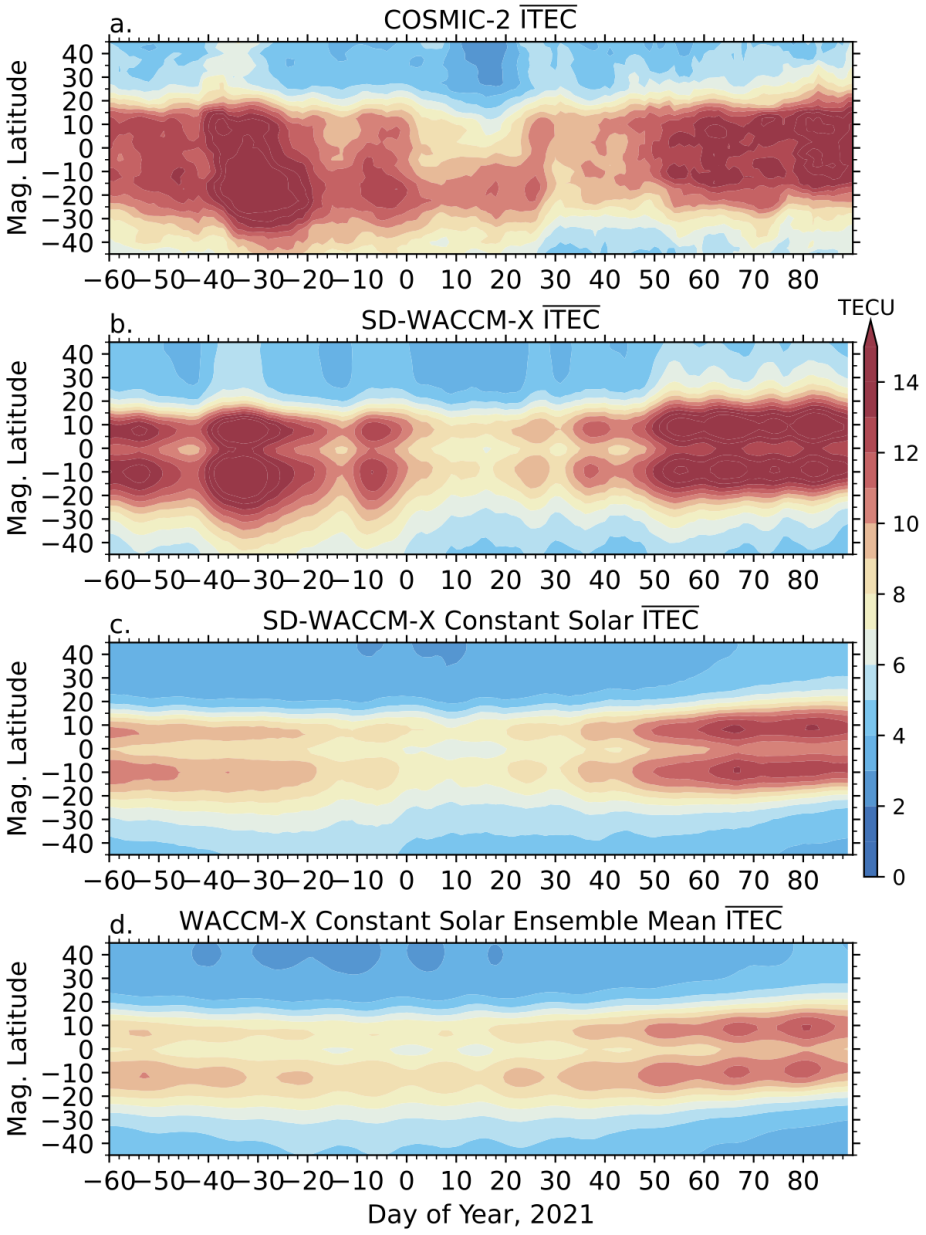Atmosphere 2022: Variability in the ionosphere during the 2020-2021 sudden stratospheric warming (SSW) is investigated using a combination of Constellation Observing System for Meteorology, Ionosphere, and Climate-2 (COSMIC-2) observations and Whole Atmosphere Community Climate Model with thermosphere-ionosphere eXtension (WACCM-X) simulations. The unprecedented spatial-temporal sampling of the low latitude ionosphere afforded by COSMIC-2 enables investigating the short-term ($<$ 5 days) variability in the ionosphere during the SSW event. The COSMIC-2 observations reveal a reduction in the diurnal and zonal mean ionosphere total electron content (ITEC) and reduced amplitude of the diurnal variation in the ionosphere during the SSW. Enhanced ITEC amplitudes of the semidiurnal solar and lunar migrating tides and the westward propagating semidiurnal tide with zonal wavenumber 3 are also observed. The WACCM-X simulations demonstrate that these variations are driven by
variability in the stratosphere-mesosphere during the 2020-2021 SSW event. The results show the impact of the 2020-2021 SSW on the mean state, diurnal, and semidiurnal variations in the ionosphere, as well as the capabilities of the COSMIC-2 mission to observe short-term variability in the ionosphere that is driven by meteorological variability in the lower atmosphere.

Diurnal and zonal mean ITEC from (a) COSMIC-2 observations, (b) SD-WACCM-X, (c) SD-WACCM-X Constant Solar, and (d) WACCM-X Constant Solar Ensemble Mean. The results show an overall good agreement between the COSMIC-2 observations and SD-WACCM-X simulations. Both show a decrease in early January 2021, which is attributed to the occurrence of a sudden stratosphere warming (SSW) event.